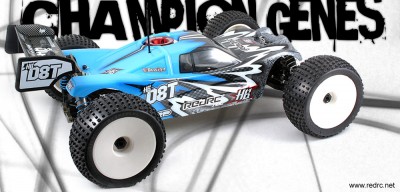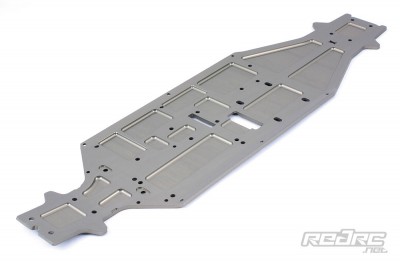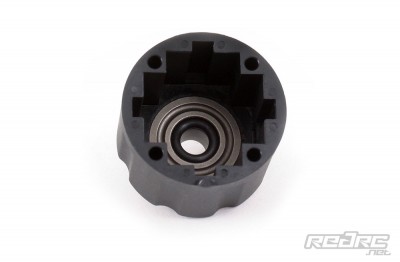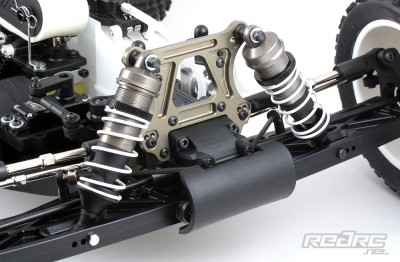Champion Genes – Hot Bodies D8T
1/8 scale nitro off-road truggies are still a growing class, although the release of new kits has declined a bit during the last 12 month, nearly all of the important manufacturers have released at least one truck the last couple of years. Hot Bodies’ new D8T is the latest 1/8 scale nitro truggy on the block and heavily borrows from the HB D8 buggy that Atsushi Hara drove to victory at the 2008 nitro buggy World Championships in North Carolina/USA. Most of the changes or updates take place chassis side, in combination with longer wishbones plus some other refinements, to make sure the D8T not only matches but aims to exceed the performance of the current breed of nitro competition truggies.
Front
The build of Hot Bodies’ D8T starts with the double bell crank steering assembly. As usual with nearly every 1/8 scale buggy and truggy the steering set-up includes a built-in and adjustable servo saver with full ball bearings, but surprisingly no adjustable Ackermann geometry. Only one location hole for the steering linkage is offered on the connection bar. Same applies to the outer steering spindles. That’s not much of a problem but unusual for a competition buggy with their billions of different set-ups to choose from. Anyway, back to the steering assembly.
The inner levers are sandwiched between the 4 mm thick alloy chassis plate and a plastic upper steering plate. The hard coated chassis is of a light weight thanks to the fact that it’s heavily machined. The steering posts sit in slotted holes so you do not need to counter them while tightening the screws. The front chassis brace is a plastic item to control the amount of flex the chassis offers. Normally plastic braces offer more flex over alloy items and therefore make for more controllable grip especially on rougher track surfaces.
Next up is the geared front differential with internal spider gears. The plastic housings offer a metal insert for the outer ball bearing and the outdrive to avoid premature wear on the housing. The spiral bevel gear makes for a long lasting, silent and efficient drivetrain. Hot Bodies supplies two tiny bottles of #7.000 oil for the front and middle differential. After assembling the differential case the 2.4 mm front sway bar as well as the front hub carrier assembly are taken care of. The hub carrier is supplied with 10 degrees of caster giving the front steering spindles a total of 20 degrees as the chassis plate has 10 degrees of kick-up.
The front universal drive shafts come factory assembled, the couplings are lightly greased and the grub screws are secured with thread-lock which means installing them is a no-brainer. The wheel hexes have minimal off-set giving the front wheels only a slight amount of roll radius which stands for low steering forces and therefore faster steering response compared to truggies with large off-set wheel hexes. In turn this means the front and rear wishbones are quite long, around 128mm between the inner and outer suspension shaft, but strength is guaranteed due to the unusual design. What’s so unusual with it? Different from other manufacturers Hot Bodies opted not to open the spaces between the internal webbing of the wishbones giving them higher strength without a vast amount of additional weight. This design was introduced with the D8 buggy and proved successful even in the loamy conditions experienced at the 2008 World Championships.
The wishbones are located by alloy front and rear suspension holders. This makes for a very sturdy front end in combination with the ‘full surface’ wishbones. The front aluminium shock tower that attaches to the differential case is 4 mm thick and is heavily machined just like the chassis plate. The front shocks are 16mm big-bore diameter and 97mm long – just as the ones found on the buggy. Hot Bodies supplies a supplemental instruction sheet for the front and rear shocks but more of that later. Included in the kit are CW (clockwise) and CCW (counter clock wise) thread screws to attach the shocks to the wishbones. Do not mix them up as otherwise the screws may come loose during the constant up and down movement of the wishbones during racing.










